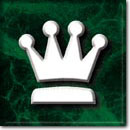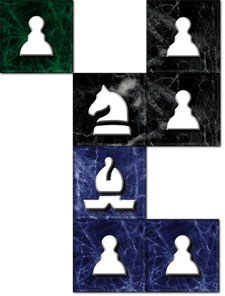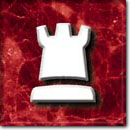Designer's Notes
by Jason Wittman with Hilary Moon Murphy

Chess. What other game has such a history, or such fanatical devotees? From the royal courts of Persia, it swept both east and west. Over the centuries, players who excelled in the game were revered as members of an intellectual elite. The game itself became a metaphor for struggle in all its myriad forms: religion, politics, and even love. It has inspired scholarly treatises, poetry, novels and at least one Broadway musical.
There are other games that just as ancient, checkers and Go among them, but chess has a personality that sets it apart. Instead of uniform, interchangeable pieces, it has Bishops and Rooks, Knights and Queens, Kings and Pawns. The interplay of these pieces and their varied moves creates a game of endless complexity.
The only real limitation of chess is that it has always been a game for only two players. Any additional participants have been relegated to the role of spectators. Although a number of variants for multiple players have been designed, all have been somewhat lacking. Variants for four players (the most common multiple-player variant) can only be played well with four. If you want more than four to play, you are out of luck. If you want to play with three players, it can be done, but a four-sided game board dictates that one player is besieged from both left and right while the other two players fight the war on only one front.
How then, could one create a chess game versatile enough to be played with any number of players? The answer, it turned out, was to get rid of both the board and preset layouts altogether.
Early Origins

The genesis of Tile Chess was in the late eighties, when I was still in high school. As part of a freelance project for my art class, I developed a game that was a cross between chess and dominoes. The result was a variation that required no board because the pieces had square bases that fit together snugly. The basic object was the same, but there was the additional rule that all the pieces had to remain connected to each other. No piece, or group of pieces, could at any time be apart from the others. At the time, it was just a two-player game. I got a decent grade for the project, and that was that for a while.
Fast-forward about ten years. I'm still an enthusiastic (if somewhat mediocre) chess player, and I just love the game. I started thinking about the Domino Chess game that I invented in high school, and wondering if I couldn't adapt it for more players. Versions for four players had already been done, but what about six? I constructed a quick mock-up of all the pieces drawn on flat squares of cardboard, and then brought the game over to some of my friends, and forced them to playtest it for me.
Now, if you use your friends as guinea pigs, you have to expect that they will be more polite than honest with you. Most of the time, everyone will say they liked the game, pat you on the head, and damn you with faint praise, like: "Good colors on those playing pieces." I had gotten that response to other games I had designed, and knew that it was a death knell. If a game doesn't impress your friends, it won't impress anyone else, either.
But this playtest went differently. After everyone laid out their pieces, the game became an all-out killing spree, followed by a more thoughtful cat-and-mouse period where the players stalked each other. Instead of the usual polite (and bored) compliments, one person exclaimed, "My God, it's like chess on steroids!"
Without any prodding from me, they all clamored to play it again, and then again another time. After the last game was over, they all sat around discussing the quirky strategy involved, and how different moves at critical moments would have affected the game as a whole. Then, one of my friends turned to me and said, "You know, you could sell this."
I still wasn't sure. So one of my friends helped me arrange a playtest with a bunch of gamers that I didn't know. For the price of a few pizzas, I got detailed feedback that helped me refine the game and gave me the confidence to go on with marketing it.
Variations
In the early playtests of Tile Chess, we tried a number of variations. By far the most strange was Knightmare Tile Chess, where we combined Knightmare Chess with Tile Chess. We discovered early on that some Knightmare Chess cards (for example, "Earthquake", which involves rotating the chessboard) just don't work with Tile Chess. However, once we eliminated those cards, the game worked fine. It was complete and utter chaos, but we enjoyed it enormously.

Although most of the variations we tried made the final rules, there were some cut because they caused confusion or ill will among the players. The one that I miss the most was the "Blaze of Glory" maneuver, which was allowed to a player who could not move his King out of check. The blazing piece was allowed to make any legal move except putting an opponent directly in check. Although direct attacks were out, indirect ones were fine. It was perfectly legal for a blazing piece to create a situation that put an enemy King into check from someone else's pieces. If that was not possible, the player was encouraged to look carefully for other opportunities to create mischief. While the variation played well with the first group of people that playtested it, later groups found that if led to arguments and bad feeling. With regret, the "Blaze of Glory" maneuver was eliminated from the final version of the rules.
What I've Learned
I came up with a dozen games before Tile Chess was accepted for sale. Though they are good enough for my own private amusement, I doubt very much that they would sell on the market. I have also come up with several games after the invention of Tile Chess, but none of these have met with more than mild enthusiasm. The lesson here is that persistence pays. Not every idea you come up with will make it.
Also, the games that you design should reflect your passion. If you cannot be enthused about your game, who will be? My passion is chess, so I came up with a game that lets me do things with chess that have never been done before. I enjoyed creating Tile Chess, and I hope that you will enjoy playing it.













